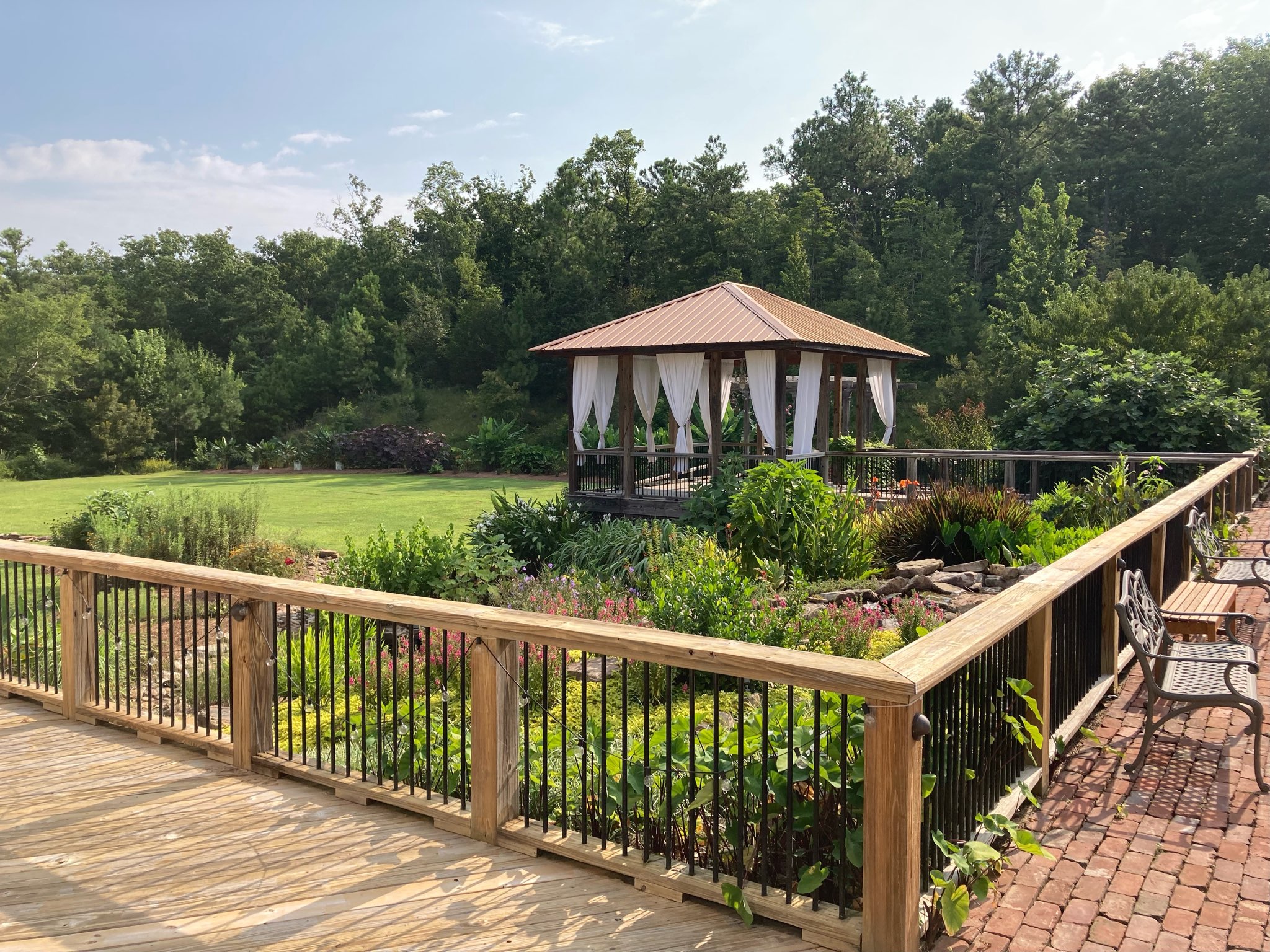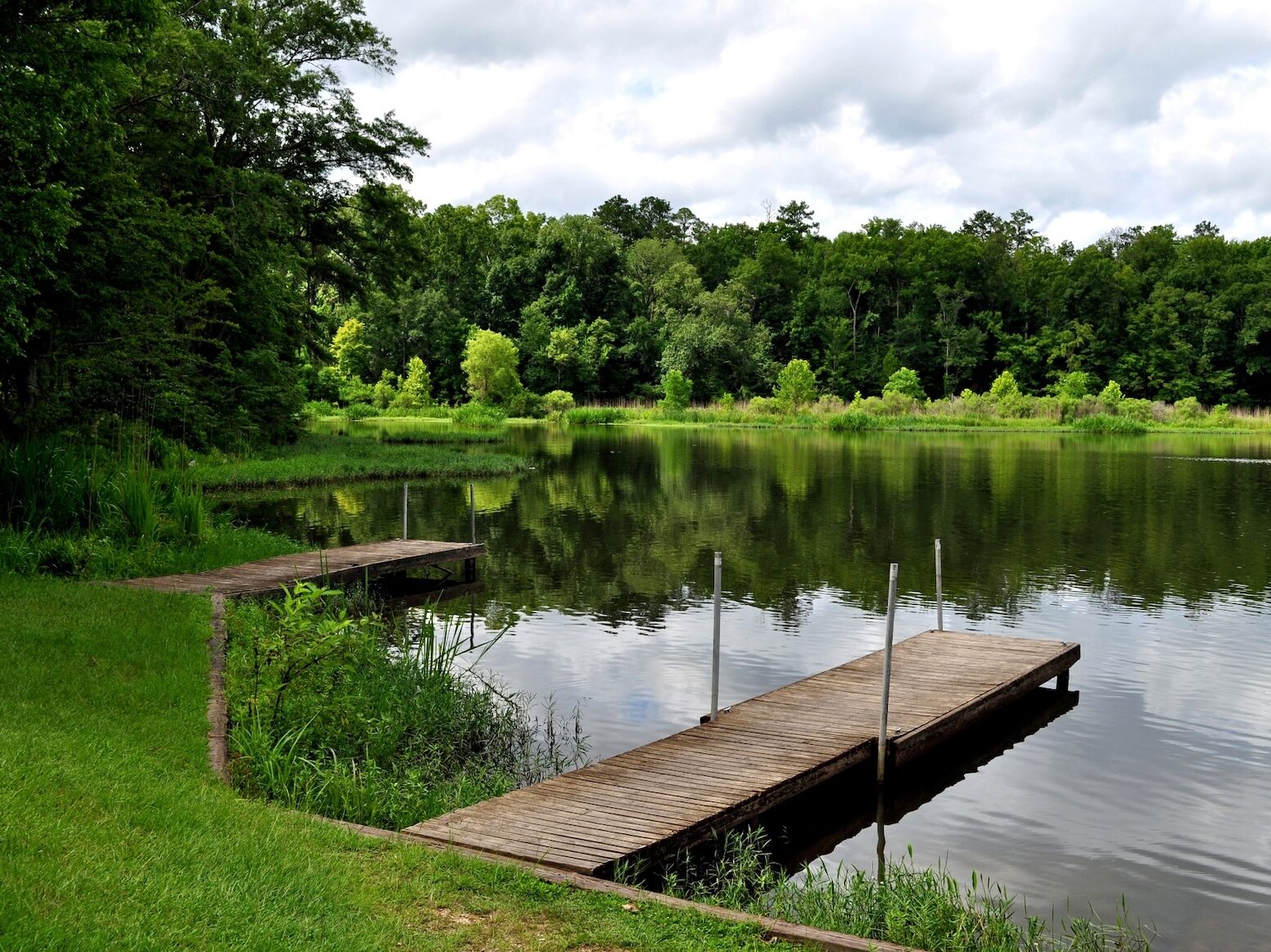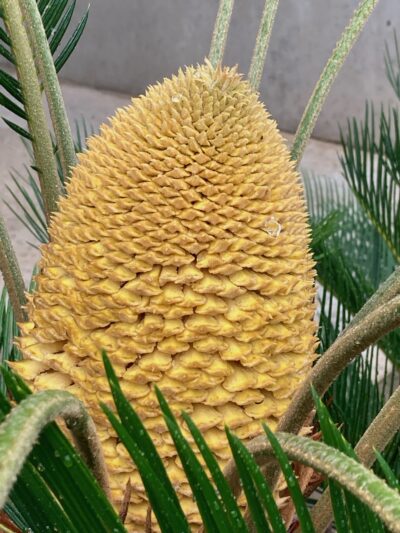
A sago cycad (Hayes Jackson/Contributed)
If the dinosaur in the museum came to life, it would recognize at least one plant in Anniston’s Longleaf Botanical Gardens—a pre-historic relic, a cycad. These plants date back from 9 to 65 million years and in all probability endured plenty of dinosaur nibbling. With plants that complement the mission of the Anniston Natural History Museum, the Gardens are packed with both native and exotic plants that beautify and mystify those who walk its trails.
Planted and tended by famed gardener Hayes Jackson, these gardens benefit from his knowledge, quirky taste and adventurous green thumb. A notorious garden-zone denier, Jackson successfully plants the unexpected. One example is the Brazoria Palm, which is native to a single county in Texas. For years, botanists puzzled over what and where this ultra-rare plant originated from. They have judged it one of a handful of native hybrid palms found in the U.S.—and in the Longleaf Botanical Gardens. The Gardens serve as a conservation site for rare plants such as this one. The seeds are collected, stored and geolocated. If a hurricane or tornado destroys the habitat of the Texas Brazorias, the Longleaf Gardens stands ready to prevent extinction.
With the state’s best collection of palms—19 species—the garden also nurtures the Needle Palm. Native to Alabama, it is considered the cold-hardiest palm in the world. Along with the cycad, this relic species struggles to survive because the megafauna sloth that once ate its fruit went extinct anywhere from 2 to 5 million years ago. The ancient sloth, that would have been larger than a bull elephant, processed the fruit through its digestive system and deposited seeds with the end result. The plant is endangered in the wild.
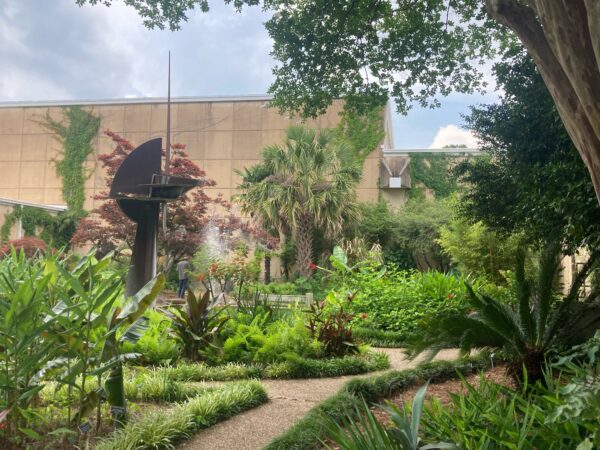
Longleaf Botanical Gardens (Hayes Jackson/Contributed)
“Fortunately, the Needle Palm also likes heat and humidity,” says Jackson, Urban Regional Extension Agent, who works onsite at the museum complex. which also includes the Berman Museum.
In gardens dedicated to pines, the Chilean Monkey Puzzle Tree stands as a living fossil. Listed as an endangered species, this oddly-shaped pine should not grow here according to garden-zone standards. It happily thrives under Jackson’s care.
Along with the historic living plants, actual fossilized wood graces the garden. Found in Wetumpka, the large stone block of once-living vegetation sits in front of the Museum of Natural History.
The 125-acre site is also home to all of the native pine trees found in the state. On one short trail behind the Longleaf Event Center stands the loblolly, shortleaf, Virginia, and of course, longleaf species. Once spanning 90-million acres, the longleaf pine grows in just 5 percent of its historic range. Two reasons explain its demise: its lumber built the nation and its growth requires an element humans fear—fire.
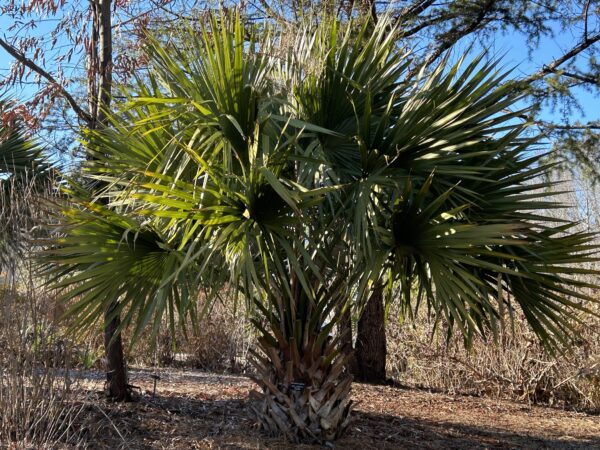
A Texas Bazorias palm (Hayes Jackson/Contributed)
Longleaf forests stand like cathedrals with broad open spaces. Within those spaces a rich diversity exists. On the longleaf trail, 25 species of native plants are labeled. Every type of warbler sings from the branches during migrations, according to Jackson. Neotropical birds stop by for plant nectar as they follow the mountain ridge now designated as birding trails.
Monarch butterflies are drawn to a milkweed garden. The blooms attract the adults and the leaves feed the caterpillars. A large metal butterfly in front of the garden tells the story. It joins other similar signs that interpret the many sections of the Gardens that weave throughout the complex, including the Rotary Sensory Garden, the Bird of Prey Trail with Alabama raptors, the Tropical Cascading Garden and the Tropical Courtyard Garden, and the Longleaf Nature Trail.
It is free to walk the nature trails, which will delight throughout the seasons with beauty, color and curiosity. It is open daily from Tuesday through Sunday during museum hours. Garden enthusiasts can volunteer to be a member of Jackson’s Green Team. Every third Thursday, Jackson hosts a program in the Longleaf Event Center. Contact the Anniston Museum of Natural History for more information.
Don’t miss this upcoming event:
5th annual Spring Garden Symposium
Engaging with Plant People: The Breeders, the Explorers, & the Collectors
Thursday, March 16, 2023, 9:00 am–3:30 pm
Longleaf Event Center
